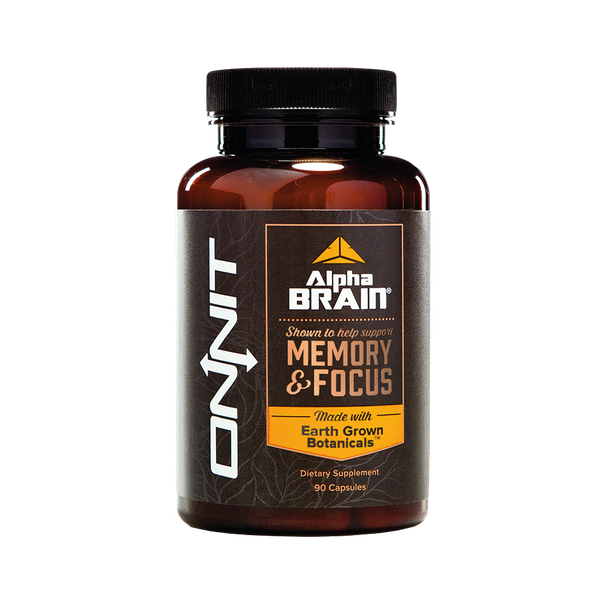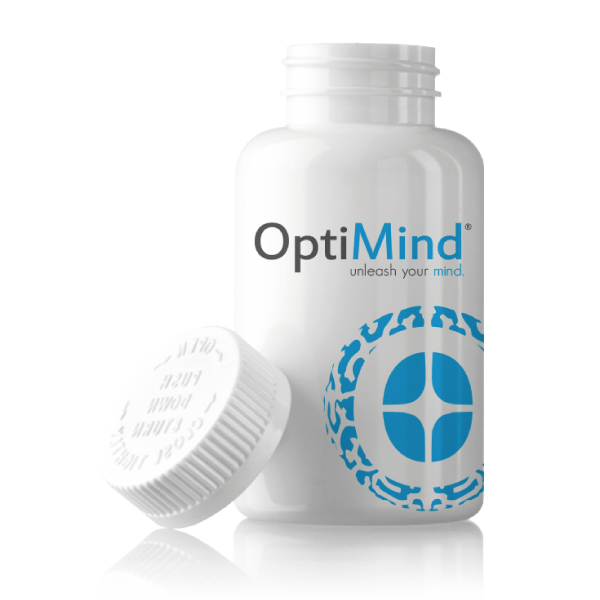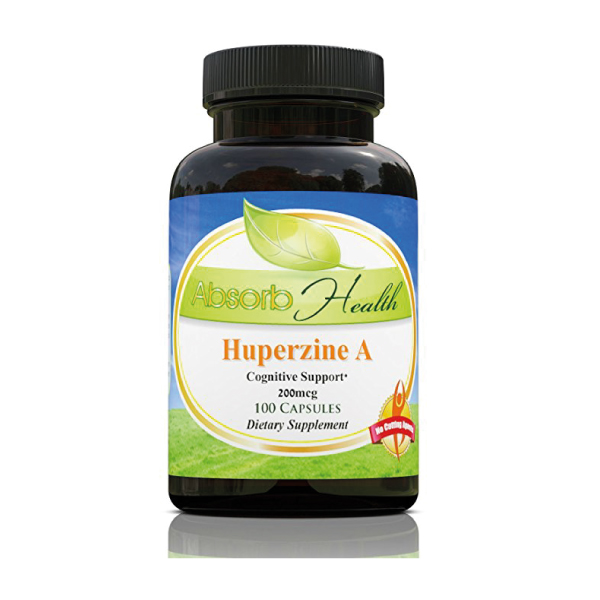Huperzine-A Summary
Huperzine-A is an alkaloid extracted from various species of Chinese club moss (Huperzia serrata). Its nootropic action comes from its ability to inhibit acetylcholinesterase, which is the enzyme that deaminates (breaks down) the neurotransmitter acetylcholine.
In recent years, antiacetylcholinesterases have been shown to have significant improvements in learning and memory, and are currently being used as an Alzheimer's therapy.
Where Does It Come From?
Huperzine-A is extracted and concentrated from the Chinese firmoss, and other firmoss'.
Huperzia serrata
Huperzia elmeri
Huperzia carinat
Huperzia aqualupian
+ Indications
- Alzheimers disease
- Family history of Alzheimer's
- To improve memory during study
+ Contraindications
insert
+ Mechanisms
- Antiacetylcholinesterase [1]
Herbal Actions:
- Memory Enhancer
- Anti-Alzheimers
Variants:
[-] Huperzine-A is the standard product and is the version used to inhibit acetylcholinesterase. This action limits its dosage significantly but has therapeutic benefit in its own right.
[+] Huperzine-A is a synthetic stereoisomer with lower antiacetylcholinesterase activity, making it useful in much higher doses for other neuroprotective benefits. This version has shown significant protective ability against nerve agents at doses as high as 40mg/kg [3].
Dosage
50 - 200 mcg/day
Take note that this is micro grams not grams. Very small dosage.
- • Not required to be taken with food
- • Spikes quickly but has a long half life
- • Can be taken in a fasted state
- • Cycling is recommended with this nootropic
Chemical Description
Huperzine-A is a sesquiterpene alkaloid. Its extracted from Huperzia spp. is [-]Huperzine-A. [3]. This is the primary therapeutic molecule for its beneficial antiacetylcholinesterase activities.
A synthetic stereoisomer has also been created which is identified as [+]Huperzine-A. This synthetic isomer has far less antiacetylcholinesterase activity, which allows it to be used at a higher dose to achieve other neuroprotective actions in the body. [3].
+ Solubility:
Water Soluble [1].
Pharmacology & Medical Research
+ Antiacetylcholinesterase
The antiacetylcholinesterase activity of huperzine-A is incredibly potent compared to pharmaceutical options like galantamine and donepezil. It's a reversible, selective, and well-tolerated inhibitor of the enzyme, allowing it to produce minimal side effects [11].
+ Neuroprotective
Several studies have shown the neuroprotective effects of huperzine-A against a variety of cognitive disease states. It is essential to understand the difference between [-] and [+] huperzine-A as the therapeutic doses are significantly different.
[-]Huperzine-A
Alzheimer's Disease
Antiacetylcholinesterases are a mainstay of treatment for the development of Alzheimer's disease [10]. Due to the significant antiacetylcholinesterase activity of huperzine-A, it has become a popular choice in treatment for this condition [11].
The pathology of Alzheimer's is highly complex and involves several degenerative conditions. Therefore, no single treatment is going to realistically offer protection from the disease, but rather a combination of multiple therapies. There are some well-understood pathways that lead to the development of Alzheimer's which can be used to identify new and improved methods of correction.
The development of Alzheimer's mainly involves a buildup of beta-amyloid plaque in the neurons of the brain [12]. Other factors including an increase of intracellular neurofibrillary tangles (NFT) made up of hyperphosphorylated tau proteins have been closely linked with the development of Alzheimer's disease [10, 12].
Huperzine-A has been shown in numerous studies to offer cholinergic support through its antiacetylcholinesterase activity through blockage of the acetylcholinesterase and beta-amyloid interaction (interrupts the formation of AchE–Ab complex) [13]. Huperzine-A has also been shown to offer protective benefit to the neurotoxic insult brought on by amyloid-beta through abnormal APP (beta-amyloid precursor protein) processing, and improvements in NGF signaling [10].
All of these actions have a direct impact on the pathological state of Alzheimer's disease but fails to address the buildup of hyperphosphorylated tau proteins. This suggests a combination of huperzine-A with therapies aimed at targeting this tau pathway may be more effective in the treatment and prevention of Alzheimer's disease.
[+] Huperzine-A (Synthetic stereoisomer)
Chemical Nerve Agents
In a study investigating the protective effects of [+] huperzine-A on the effects of the nerve agent soman, researchers found that huperzine-A was able to protect against the toxicity of 1.2 times the LD50 dose of soman (in guinea pigs) with pretreatment (20-40 mg/kg) [3]. Soman works by irreversibly inhibiting acetylcholinesterase, resulting in seizures, and death. [6, 7, 9].
Researchers have also shown the ability for [+] huperzine-A to protect the rat brain from NMDA induced seizures at a dose of 3 mg/kg [4].
Other reports have provided support that [+]huperzine-A may modulate damage from chemical nerve agents like soman. Some of the protective effects may involve neuroinflammatory pathways like p38 MAP kinase, cerebral edema and associated neuronal death, and acute blood-brain barrier disruption. [5-9].
Toxicity
Huperzine-A is reported to have very low toxicity [2].
Cautions
Consult your doctor before taking if you are on acetylcholinesterase or choline inhibitors.
If nausea, headaches, or dizziness is experienced. Stop taking immediately. Some individuals are highly sensitive to the antiacetylcholinesterase activity of Huperzine-A
Synergy
May have potential synergy with tau protein modulating substances towards Alzheimer's
May have a synergistic effect with cholinergic for nootropic benefit.
Reported synergy with racetam nootropics
Supplements Containing Huperzine-A
Recent Blog Posts:
References:
Wang R, Yan H, Tang XC (2006) Progress in studies of huperzine A, a natural cholinesterase inhibitor from Chinese herbal medicine. Acta Pharmacol Sin 27:1–26
Liang YQ, Tang XC (2004) Comparative effects of huperzine A, donepezil and rivastigmine on cortical acetylcholine level and acetylcholinesterase activity in rats. Neurosci Lett 361:56–59
Wang, Y., Wei, Y., Oguntayo, S., Jensen, N., Doctor, B. P., & Nambiar, M. P. (2011). +]-Huperzine A protects against soman toxicity in guinea pigs. Neurochemical Research, 36(12), 2381-90. doi:http://dx.doi.org.ezproxy.laureate.net.au/10.1007/s11064-011-0564-5
Coleman BR, Ratcliffe RH, Oguntayo SA, Shi X, Doctor BP, Gordon RK, Nambiar MP (2008) [?]-Huperzine A treatment protects against N-methyl-D-aspartate-induced seizure/status epilepticus in rats. Chem Biol Interact 175:387–395
Pazdernik TL, Emerson MR, Cross R, Nelson SR, Samson FE (2001) Soman-induced seizures: limbic activity, oxidative stress and neuroprotective proteins. J Appl Toxicol 21(Suppl 1):S87– S94
Pejchal J, Osterreicher J, Kassa J, Tichy A, Micuda S, Sinkorova Z, Zarybnicka L (2009) Soman poisoning alters p38 MAPK pathway in rat cerebellar Purkinje cells. J Appl Toxicol 29:338–345
Angoa-Perez M, Kreipke CW, Thomas DM, Van Shura KE, Lyman M, McDonough JH, Kuhn DM (2010) Soman increases neuronal COX-2 levels: possible link between seizures and protracted neuronal damage. Neurotoxicology 31:738–746
Dillman JF III, Phillips CS, Kniffin DM, Tompkins CP, Hamilton TA, Kan RK (2009) Gene expression profiling of rat hippocampus following exposure to the acetylcholinesterase inhibitor soman. Chem Res Toxicol 22:633–638
Johnson EA, Kan RK (2010) The acute phase response and soman-induced status epilepticus: temporal, regional and cellular changes in rat brain cytokine concentrations. J Neuroinflammation 7:40
Zhang, H., Yan, H., & Tang, X. (2008). Non-cholinergic Effects of Huperzine A: Beyond Inhibition of Acetylcholinesterase. Cellular And Molecular Neurobiology, 28(2), 173-183.
Wang R, Yan H, Tang XC (2006) Progress in studies of huperzine A, a natural cholinesterase inhibitor from Chinese herbal medicine. Acta Pharmacol Sin 27:1–26
Selkoe DJ (1996) Amyloid beta-protein and the genetics of Alzheimer’s disease. J Biol Chem 271:18295–18298
Wang R, Zhang HY, Tang XC (2001) Huperzine A attenuates cognitive dysfunction and neuronal degeneration caused by beta-amyloid protein-(1–40) in rat. Eur J Pharmacol 421:149–156
Examine.com. (n.d.). Huperzine-A - Scientific Review on Usage, Dosage, Side Effects | Examine.com. Retrieved March 2, 2017, from https://examine.com/supplements/huperzine-a/










As COVID-19 continues to spread around the world, we’re getting a lot of questions on what the potential role of herbal medicine is during the outbreak. Learn how the virus works and how to limit your chances of transmission.